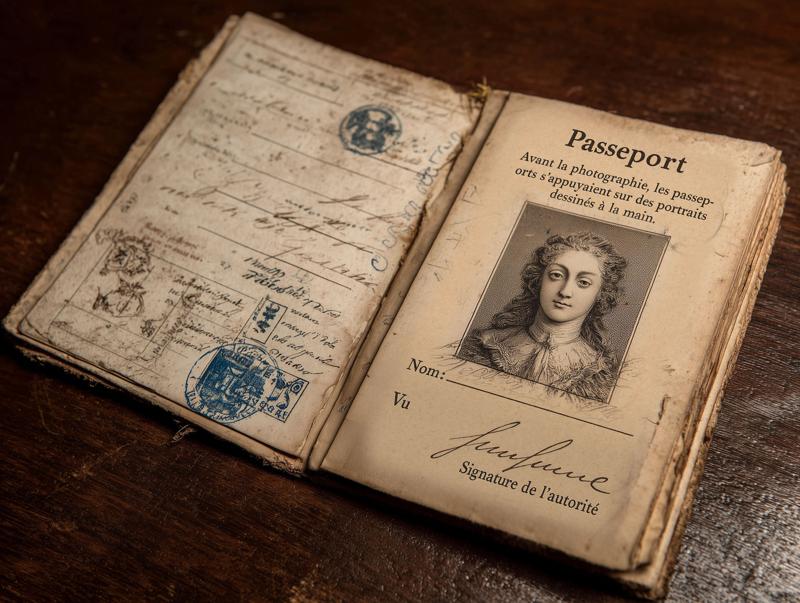Passports Before Photography
Today, we take it for granted that a passport contains a sharp, machine-readable photograph, often with tamperproof markings. But before cameras and paper-based photo printing became available, governments still had the same problem: how do you make sure the bearer of a document is really the person it describes?
In the early 19th century, the solution was to hire artists to draw likenesses. These specialists were sometimes called artistes passeportiers in France, a term that never quite reached official usage but appeared in newspapers and administrative reports. Their job was to capture a person’s face in quick but recognizable ink or pencil strokes: formal enough to satisfy border guards, yet efficient enough for the growing demand for international travel.

The Craft of the Passeportier
The work resembled miniature portraiture. Artists trained in silhouettes, line drawings, or watercolor were recruited to adapt their skills to bureaucratic needs. The portraits had to be small, usually no larger than a postage stamp, and glued or stitched onto the paper document.
A successful artiste passeportier was not expected to produce flattering likenesses. In fact, manuals advised against embellishment. Officials wanted recognizable details -- forehead shape, hairline, nose length, even scars -- captured in a way that was harder to forge than a written description alone.
The best could finish a sketch in under fifteen minutes, and some cities even maintained offices where travelers could sit for their portrait before heading abroad.

Decline of a Short-Lived Profession
By the 1860s, photography was spreading quickly. Small photographic studios opened in port cities and railway hubs, offering cartes de visite at affordable prices. Governments soon found photos more consistent and verifiable than hand-drawn portraits.
Within a generation, the profession of the passeportier had largely disappeared. What remains are a handful of passports and travel permits in archives, stamped and signed, with delicate little ink portraits of travelers who otherwise would have left no visual trace.
Legacy
The era of passport artists was brief, but it illustrates how bureaucracies adapt technology to solve identity problems. For a few decades, art was the state’s solution to personal identification. The surviving documents remind us that even something as standardized as a passport once relied on the steady hand of an artist.
Disclaimer: Not everything you read on the web is accurate or even true. Always do your own research before treating something as fact — real research, not just a few YouTube videos or quick searches. Trust reputable sources, check the evidence, and read critically.